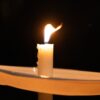Obstructive sleep apnea (OSA) affects approximately 85 million people in the United States and up to 3.9 million in the United Kingdom. Characterized by interruptions in breathing due to the throat collapsing and restricting airflow, OSA can lead to snoring, sleep disturbances, daytime fatigue, and headaches. Recent research presented by Martino Pengo, an Associate Professor at the University of Milano-Bicocca, suggests a concerning link between air pollution and the severity of this condition, indicating that urban air quality may play a significant role in respiratory health.
The study, unveiled at the European Respiratory Society (ERS) Congress in Amsterdam, analyzed data from 19,325 patients diagnosed with OSA across 25 cities in 14 countries. By merging patient data from the European Sleep Apnoea Database with air quality records from the Copernicus Atmosphere Monitoring Service, researchers examined the impact of fine particulate matter known as PM10—particles with a diameter of 10 microns or less—on the severity of sleep apnea.
Link Found Between Air Quality and Sleep Apnea Severity
The findings revealed a direct correlation: as air pollution levels increased in various cities, so did the severity of sleep apnea among patients. Specifically, for each unit increase in PM10 concentration, there was a corresponding rise in the Apnea-Hypopnea Index (AHI), a metric used to assess the severity of sleep apnea. The AHI measures the average number of times a person stops breathing or experiences shallow breathing during an hour of sleep.
Pengo noted, “We confirmed a statistically significant positive association between average long-term exposure to air pollution, specifically fine particles known as PM10, and the severity of obstructive sleep apnoea.” Notably, even after accounting for other factors traditionally associated with OSA, the researchers observed an average increase of 0.41 respiratory events per hour of sleep for each unit increase in PM10. This underscores the persistent influence of air quality on respiratory health.
Certain cities exhibited stronger connections between air pollution and OSA, particularly Paris, Athens, and Lisbon, where the data indicated a notable correlation. In contrast, the relationship appeared to be weaker in other locations.
Addressing Air Quality and Personal Health
While the implications of this research may be distressing for individuals with sleep apnea, there are steps that can be taken to improve air quality on both personal and community levels. The American Lung Association recommends various measures for individuals to mitigate exposure to air pollution, particularly on days when air quality is suboptimal.
For outdoor activities, it is advisable to:
– Spend time outside during early hours when pollution levels are typically lower.
– Keep car windows closed while driving through congested areas.
– Avoid outdoor activities during peak pollution hours.
At home, strategies to enhance indoor air quality include:
– Avoiding the use of solid fuels like wood and coal for cooking and heating, which can contribute to outdoor air pollution.
– Ensuring proper ventilation while being mindful of outdoor pollution levels.
– Weekly vacuuming using a HEPA filter to eliminate dust and allergens.
The UN Environment Agency emphasizes the importance of monitoring local air pollution levels and suggests wearing masks equipped with filters during high pollution periods.
For those who suspect they may have OSA, recognizing symptoms such as loud snoring, disrupted sleep, and daytime tiredness is crucial. Consulting a healthcare professional is essential, as untreated OSA can lead to serious health complications, including strokes and heart disease, according to John Hopkins Medicine. Treatment options vary but can include lifestyle changes, oral devices, or CPAP therapy, depending on individual circumstances.
As research continues to illuminate the connections between environmental factors and health, awareness and proactive measures can help combat the adverse effects of air pollution on conditions like obstructive sleep apnea.








































































